Nara and Japan’s First Emperor
2021/12/07
Perhaps no place in Japan is more associated historically with the Japanese Imperial Family than Nara Prefecture. Despite the primary residence of the current Emperor being located in Japan’s capital city of Tokyo, it was in Nara that the legendary first Emperor, Jinmu (often spelled “Jimmu”), is said to have put down his roots and kicked off what is often refereed to as the oldest royal family in the world. This article will briefly cover the story of Emperor Jinmu as it relates to Nara Prefecture and highlight some fascinating historical locations associated with him that you can visit.
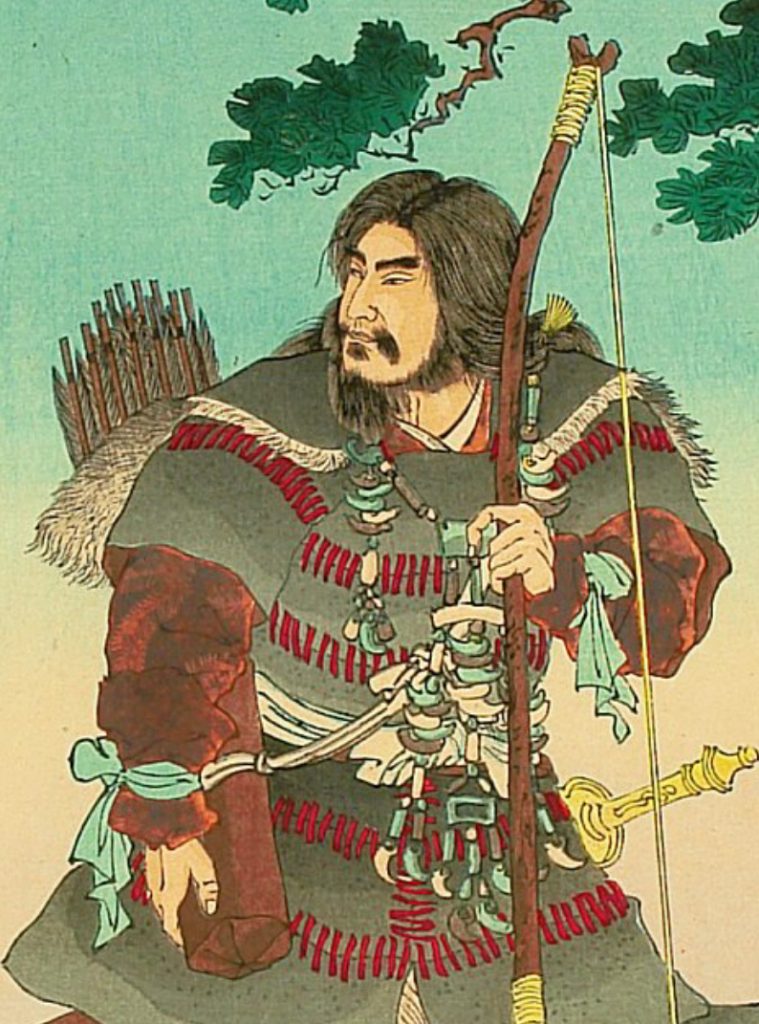
Jinmu Tenno, the legendary first Emperor of Japan
Many people may not know that the earliest written accounts of the start of the Japanese Imperial Family were not put together until around 1,000 years after it is reputed to have been established. These written accounts are the Kojiki (711 CE) and Nihonshoki (720 CE), which were both commissioned and influenced by Emperor Tenmu (673 – 686 CE) or his immediate family, including later Empress Genmei (707-715 CE), who was sister to Tenmu’s wife and successor, Empress Jito (686-697 CE).
Establishing a Link Between Emperors
Emperor Tenmu was known as a reformer and was the first leader to receive the title of “Emperor” during the time of his reign. He sought to consolidate power around the Imperial Throne and to legitimize Japan’s Imperial line through various ways, including telling of the story of its creation; one that was tied to powerful deities and the formation of the country itself that led continuously up to his reign.
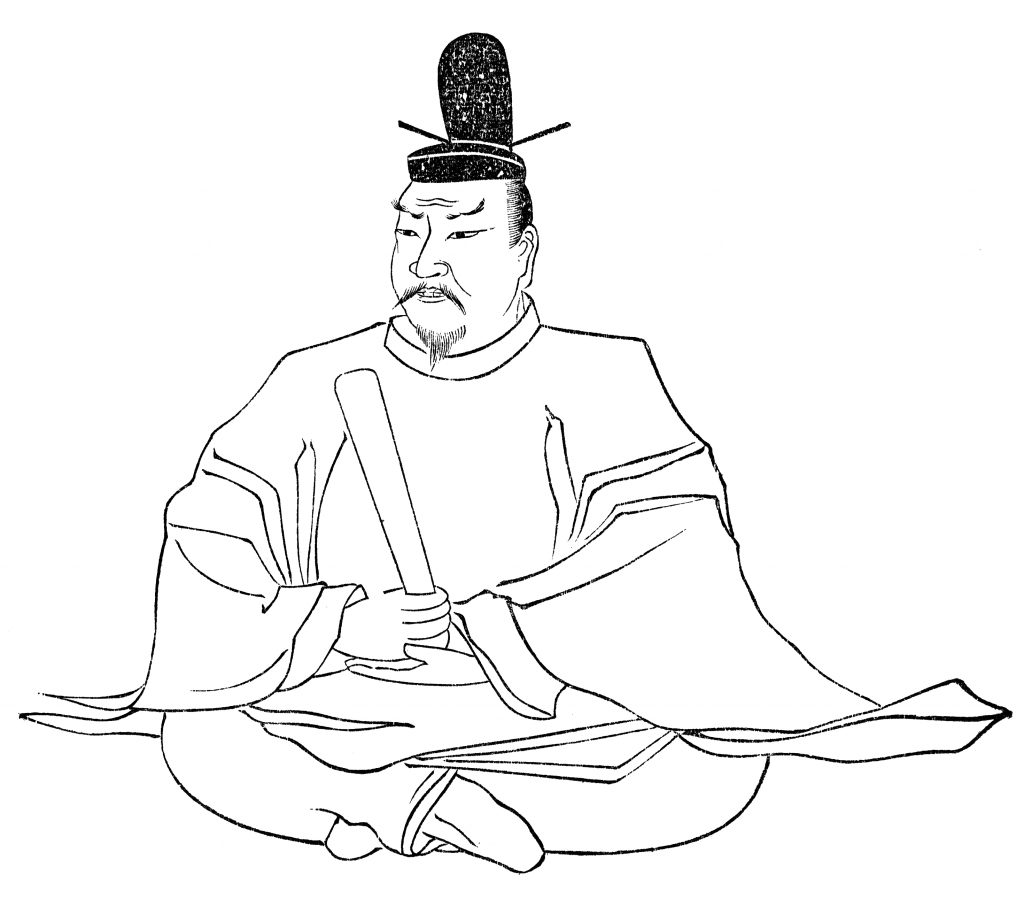
Emperor Tenmu, the first contemporaneously named Emperor of Japan
According to the writings that were eventually put together, the man who would become the first Emperor was a direct descendant of the sun goddess Amaterasu and was born in the year 711 BCE with the name of “Kamu-yamato Iware-biko no Mikoto” (who will just be referred to as “Jinmu” for the rest of this article). This ancient age before the founding of Japan’s Imperial family is known in Japan as the “Jinyo” or “Age of the Gods.”
Jinmu eventually set off with his family clan from the island of Kyushu to the Kansai region of Honshu, at first landing in Osaka and meeting in battle with an already established group of people in the area that they called the “Emishi” (“Emishi” basically meaning “barbarians”). The first battle was lost however, with Jinmu determining that the defeat occurred due to his forces fighting from west to east, in opposition to the sun. Therefore, Jinmu decided to circle around the Kii Peninsula to the south and approach from a different direction back towards what is now northern Nara.
The Kii Peninsula is one of the most geographically rugged areas in Japan, consisting of hundreds of kilometers in all directions of towering mountains and steep river canyons. Jinmu, however, appeared to be correct in his assessment about the importance of direction in his approach as he was met and guided through the unknown area by a three-legged crow known as “Yatagarasu.” Interestingly, the 3-legged crow is an ancient symbol that has been used in many different religious traditions throughout Asia, including being a symbol associated with the sun in ancient China.
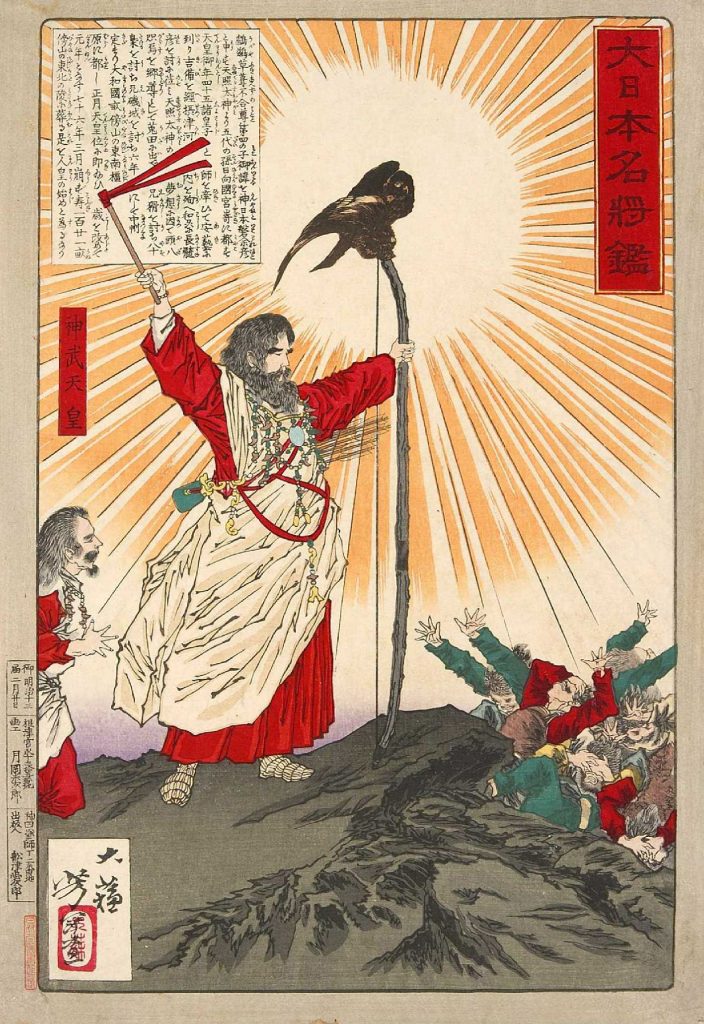
Jinmu with the 3-legged crow Yatagarasu.
As Jinmu’s party made its way through the Kii Peninsula, he had run-ins with various deities and performed feats that illustrated his leadership qualities. Eventually, his group ended up in northern Nara and in a rematch battle, defeated the Emishi forces and established his capital in the Nara Basin, becoming the first Emperor of Japan.
The supposed route that the three-legged crow led him on is now marked by various monuments recounting where he passed or the things he did in each area. Starting in Wakayama Prefecture, he passed over towering mountains into Nara Prefecture, including over the famous peak of Mt. Odaigahara. After that, he made his way to the Yoshino River and what is now Yoshino Town, where there are various spots that mark his passing, such as the Iwagami Shrine where was said to have met a local god who emerged from a large boulder.
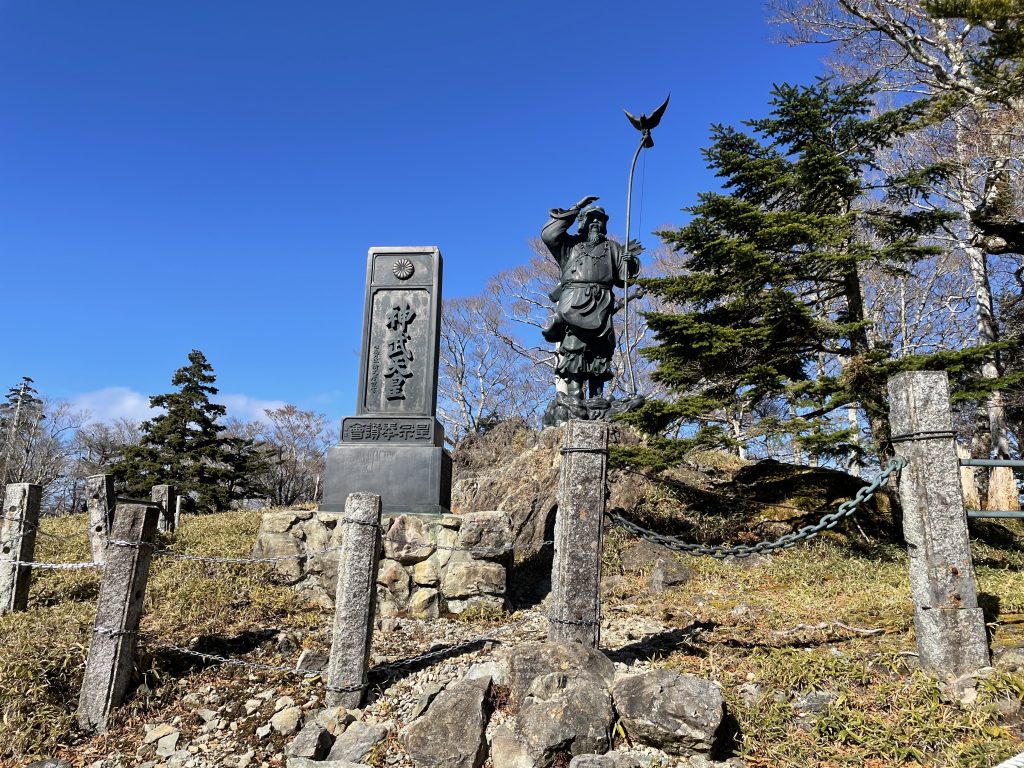
Statue depiction of Jinmu near the peak of Mt. Odaigahara.
The place where he established his royal palace was just below Mt. Unebi, one of the the 3 Mountains of Yamato where now the Kashihara Shrine (“Kashihara-jingu”) can be found. The shrine is not that old, being constructed during the Meiji Period (visitors may notice a similar construction style to the famous Meiji Shrine of Tokyo) to enshrine Emperor Jinmu and his wife as the central deities.
The area surrounding the 3 Mountains of Yamato is also where Emperor Tenmu and Empress Jito would establish the first official Imperial City of Japan (modeled after Chinese Imperial Capitals) over a thousand years later, now known as Fujiwara-kyo. The location chosen for the city would have had significance for Tenmu and his family in connecting and legitimizing their reign using the legend of Emperor Jinmu that they themselves played an integral part in putting together.
Recommended Sightseeing Spots:
If you wish to learn more about the story of Jinmu, his journey, and ascendency to the Chrysanthemum Throne, there are many places you can visit in Nara Prefecture that are not just landmarks in association with the first emperor, but also beautiful and fascinating spots on their own.
Considered one of the most beautiful mountains in the Kansai region, Emperor Tenmu was said to have passed over this mountain while following Yatagarasu (the 3-legged Crow) to the Nara Basin. Here you can find great hiking and amazing scenery in a pristine mountain landscape. There is also a decent amount of tourism infrastructure to accommodate longer stays such as hotels and restaurants.

Hiking through a sea of bamboo grass on Mt. Odaigahara
Built around a remote mountain peak in Totsukawa Village (Japan’s largest village by area), Tamaki-jinja is one of a group of shrines in Japan with a claim to being the oldest Shinto Shrine in the country. Emperor Jinmu’s troops were said to have taken a breather here on their march towards the Nara Basin and Jinmu himself placed a sacred gem here to pray for victory.
It is also one of the sacred sites of Japan’s most rugged pilgrimage route, the Omine-okugakemichi, on which mountain ascetics (known as “yamabushi”) have done training for centuries. Though it may not see as many visitors as more easy to access shrines, the Tamaki Shrine has a mysterious and magical atmosphere that is hard to put into words and must be visited to be understood.
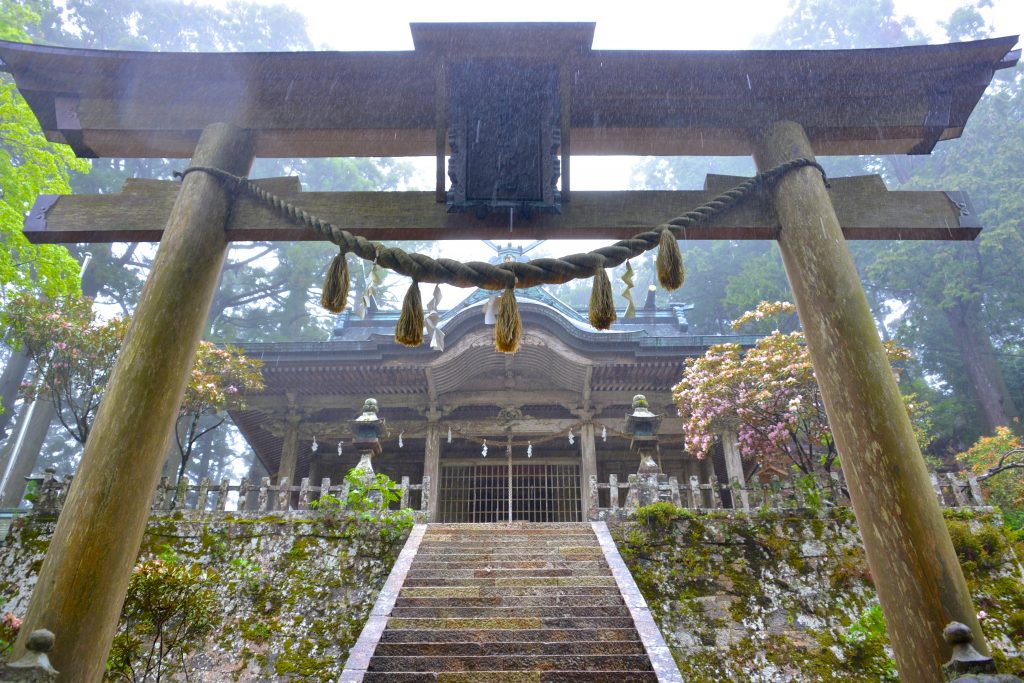
Tamaki-jinja Shrine
The area of Yoshino Town has a couple different areas associated with Emperor Jinmu (as well as Emperor Tenmu and Empress Jito). This includes the above-mentioned Iwagami Shrine and the Okura Shrine.
Yoshino-cho is perhaps most well known for Yoshinoyama, an old temple district famous for cherry blossoms in the spring. The lesser-visited Kuzu district is famous for its Japanese washi paper workshops that use a method that is said to have been taught to local people here by Emperor Tenmu (yes, the same emperor who is responsible for the story of Jinmu).

Kuzu area of Yoshino Town. Both Emperors Jinmu and Tenmu are associated with this historical area in the southern mountains of Nara.
Kashihara Shrine
Located at the southeastern foot of Mt. Unebi, the Kashihara Shrine enshrines Emperor Jinmu and his wife. It is around this same location where Jinmu is said to have built his palace upon becoming Emperor.
Constructed in the Meiji period, the architectural style is similar to Tokyo’s Meiji Shrine, with huge towering torii gates and vast open spaces to explore. Many residents of Kashihara enjoy walking and other outdoor activities in and around the shrine premises as it is similar to a large park. There is also a hiking course which leads to the top of Mt. Unebi that is a great resource for those who wish to escape from the surrounding city for a little while.
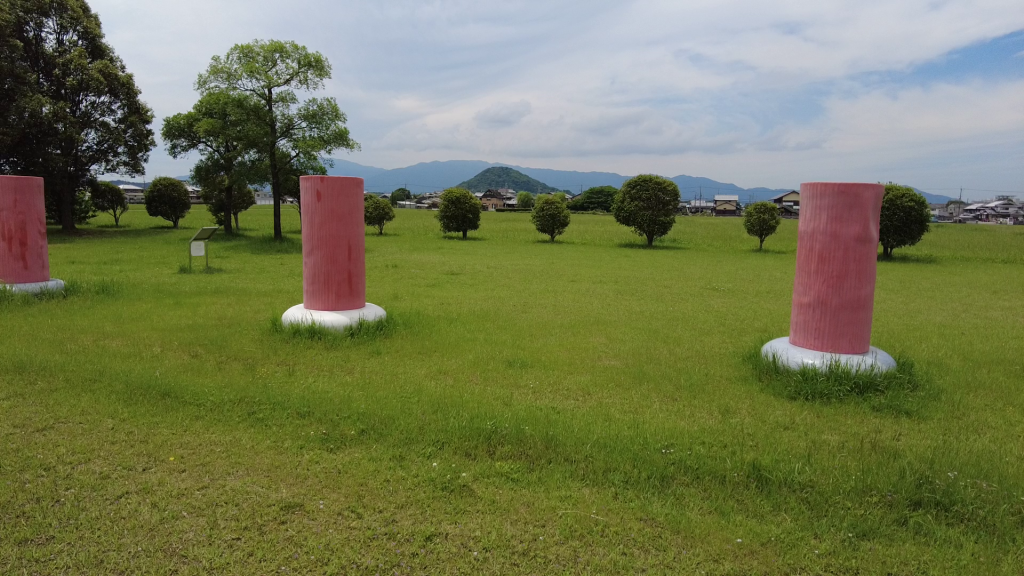
Mt. Unebi (location of the Kashihara Shrine) viewed from the site of the ruins of Emperor Tenmu & Empress Jito’s Fujiwara-kyo Palace.
Beyond the spots mentioned above, there are many other locations in Nara associated with Emperor Jinmu that are sure to be of interest to those who are fascinated by stories associated with ancient Japan. For more info on how to visit these locations or if you are interested in a our guiding services, please feel free to send us a message.

01
FIND YOUR FAVORITE
TRIP ON OUR WEBSITE.
SEND US AN INQUIRY.

02
PERSONALIZE THE TRIP
TO YOUR INTERESTS
WITH OUR CONSULTANT.

03
20% DEPOSIT TO CONFIRM.
BALANCE PRIOR TO ARRIVAL.
PAYMENT BY CC OR TT.

04
WE WILL
MEET YOU
AT THE AIRPORT.

05
DISCOVER THE
TREASURES!